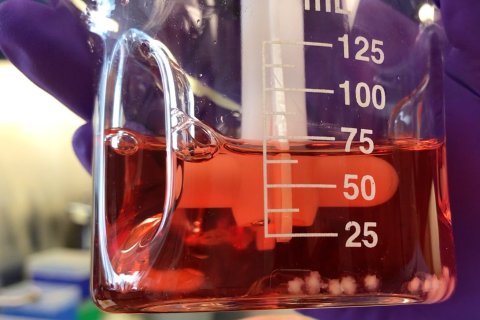Neuroscientist Jeroen Pasterkamp
Jeroen Pasterkamp is Professor of Translational Neurosciences, Scientific Director at the Brain Center Rudolf Magnus and Director of the MIND Facility, an innovative research facility with unique global expertise in the area of brain research.

“Lots of things happen in the brain during the first 1001 days, both on a structural and on a functional level”, Pasterkamp explains. “This period affects how you develop in terms of motor behaviour, but also cognition and language.” The team investigates the entire development during those 1001 critical days. “Language takes centre stage, because it neatly falls within that period; you start talking, and so on. As Utrecht has a group of excellent language researchers, we connect them all with each other.”
Pasterkamp started out at the Brain Center Rudolf Magnus in 2004 and specialises in epilepsy, ALS as well as developmental disorders. As a translational researcher, he is the link between basic research and clinical, patient-oriented research. Using real brain tissue (so-called brain organoids) in the lab, he imitates what happens in the brain during early development. “This method allows us to unravel how a young brain develops and discover what goes wrong in the case of developmental language disorders.”
Using stem cells, you can copy the relevant area of the brain in the lab and manipulate it.
Growing brain structures in the lab
Together with the team, he wants to look at early development from different angles. “We want to see whether we can find certain genetic abnormalities, characteristics or environmental effects in children with language disorders. Each member of the team can then use this information as a starting point for research; for instance, neurobiological research with zebra finches, or in my case brain organoids in the lab.”
Pasterkamp can approach his organoid research from many different angles. “I do exactly the same thing within this theme as in my research into epilepsy, for example, but I can now apply it to language. I would never have been able to do so without our interdisciplinary team. Although normal connections between different areas of the brain are not visible in an organoid, for instance, they can be found in a zebra finch. So as soon as we make a discovery in the lab, my colleagues working with zebra finches can test this discovery in the entire organism.”
An organoid is a fabulous tool, because it was created from human cells. “Using stem cells, you can copy the relevant area of the brain in the lab and manipulate it. You can then examine it selectively in each individual group of patients. We aim to examine the differences with a group that suffers from another disorder or with a healthy group.”

Connections in the brain and between disciplines
If you discover that the cortex of the organoids in the lab has an abnormal structure, what is the next step? “You could revisit all patients with a language disorder and scan these people to see who has the same type of structure. We can also contribute to the understanding of what happens at a cellular level. When something goes wrong, for instance, do you lose connections between brain cells? Which brain cells are involved? If we have this information, we can perhaps start screening for therapies to strengthen these brain connections again.”
Pasterkamp views this theme as a starting point for all kinds of research into early brain development. “I do not personally look at environmental factors in the lab, but some of my colleagues investigate the role of nutrition in organoids, for example. We hope to welcome new people who can contribute something novel to the theme. It does not even have to be language-related. The purpose of this theme is to connect people and fields of study with each other.”
Jeroen Pasterkamp's first 1001 days

Jeroen Pasterkamp: "In my case, my first 1001 days were marked by enjoying food and sitting down. I started walking a little later, but in the meantime all the baby fat has disappeared!"
Pasterkamp is also a member of the Scientific Advisory Board of the Epilepsy Foundation, Visiting Professor at the University of Turin, and joint organiser of the Utrecht Brain Conference and the Utrecht Summer School Neural Circuit Development and Plasticity.

